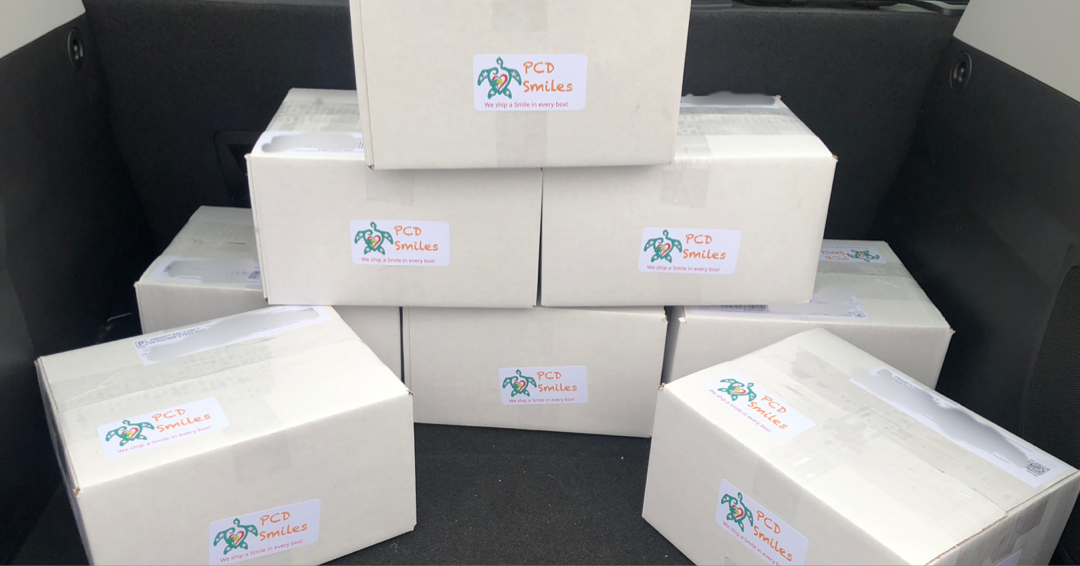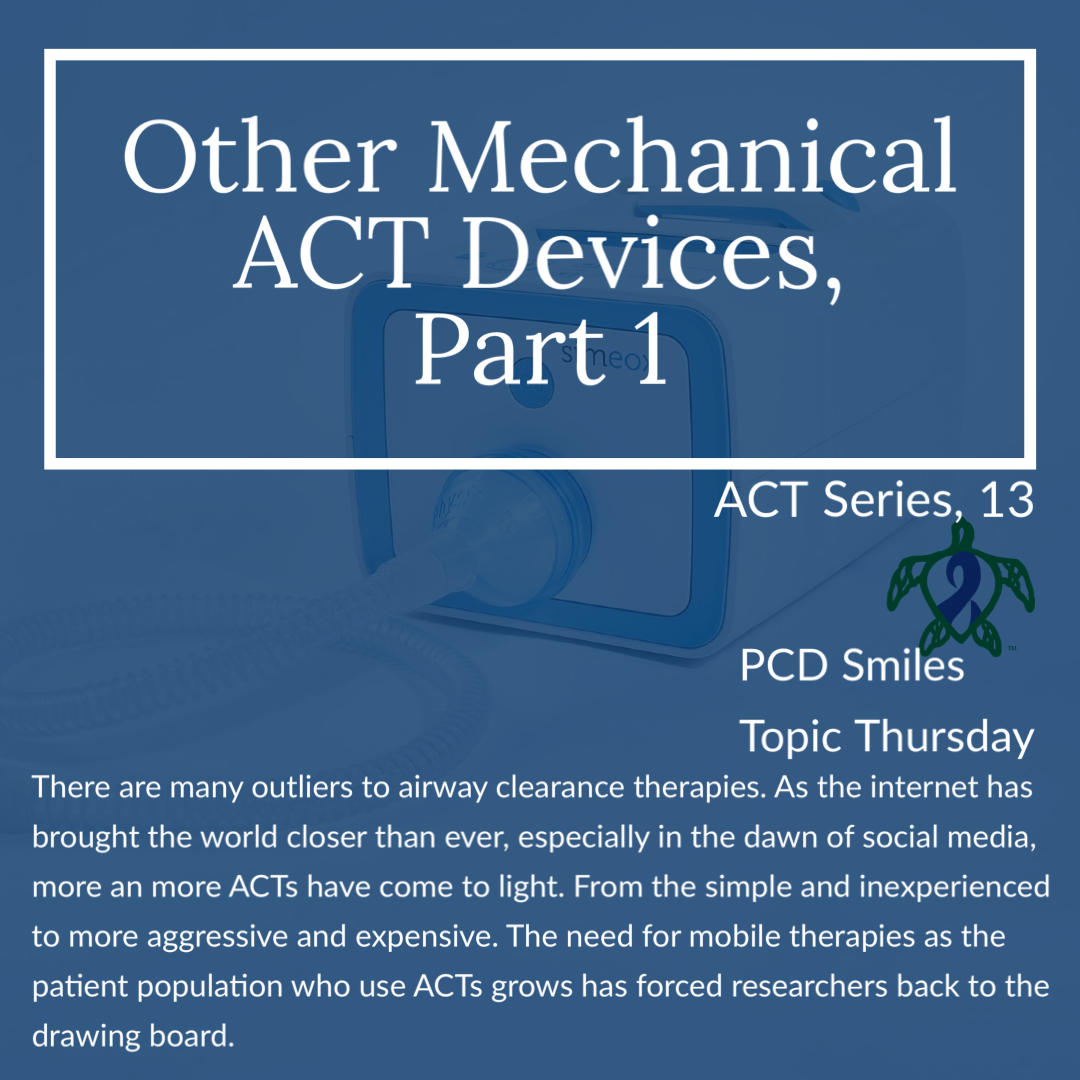Over the next two weeks we will explore other mechanical airway clearance devices in our airway clearance technique (ACT) series. There are many outliers to airway clearance therapies. As the internet has brought the world closer than ever, especially in the dawn of social media, more and more ACTs have come to light. From the simple and inexpensive to more aggressive and expensive. The need for mobile therapies as the patient population who use ACTs grows has forced researchers back to the drawing board. In fact even basic clinics, licensed respiratory therapists, patients, everyday people with 3D printers, and even social media influencers have gotten in the game of inventing ACTs and ACT devices. But what is true and what is helpful? We will spend the next few weeks looking at some of the more notable ones, including the medically sound ACTs rooted in scientific evidence for certain pulmonary diseases. Not all these ACTs will work for specific mucociliary clearance diseases. Please, for your safety, ask your clinic’s licensed respiratory therapist, your clinic’s contracted licensed respiratory therapy provider for more information on these or any ACT device or method you read or hear about on the internet, social media, support group, or one on one from another patient. In “Part 1” we will go over ELTGOL therapy, the Simeox machine, and how they may be used in conjunction with other previously discussed ACTs.
ELTGOL therapy is an extremely inexpensive ACT that requires training and retraining often with your licensed respiratory therapist (physiotherapist, country dependent) to ensure patient safety and effectiveness of the ELTGOL therapy. This technique requires a lot of concentration, cooperation, and dedication to get the desired outcome, removing mucus from the airway. ELTGOL operates on the premise that keeping the glottis open, both inferiorly and laterally while the patient is laying down using slow expiration breathing will keep the airway open without clasping to allow for mucus mobilization. This is achieved during training by the patient laying on one side or the other with their mouth sealed around a hallow tube on no less than an inch and a half in diameter. This tube, which can be a ventilation tube or a piece of medical flex tubing, helps to keep the airway or rather glottis formed and open in a circle shape, much like the premise of pursed lip breathing. This shape helps the airway structures stay open in a round shape and the slow inhalation and slow exhalation through the tube helps keeps the airways from collapsing at the end of a breath. This slow ventilation along with open glottis preventing airway collapse should help ventilation mobilize the mucus within the airway. ELTGOL can be used in conjunction with autogenic drainage (AD), postural drainage (PD), postural drainage and percussion or PD&P, high-frequency chest wall oscillation (HFCWO), and is the premise of the tight seal of the mouth on ACT devices like positive expiratory pressure devices (PEP devices), oscillatory positive expiratory pressure (OPEP), intrapulmonary percussive ventilation (IPV), oscillation & lung expansion (OLE), and our next device the Simeox machine. ELTGOL therapy is a popular emerging adjunct to airway clearance therapy regiments by clinicians and patients alike due to its extremely inexpensive costs and portability. For a demonstration and training on ELTGOL therapy ask your clinic’s licensed respiratory therapist, your clinic’s contracted licensed respiratory therapy provider at your next visit.
The Simeox machine is touted as a new and innovative solution to airway clearance techniques in pulmonary diseases where patients produce larger amounts of mucus. Developed and released to sale in France just prior to the recent pandemic. The Simeox caught the attention of regulators and medical professionals in the European Union (EU) due to its help with pandemic patients. The Simeox operates under the same premise as intrapulmonary percussive ventilation (IPV) does in the United States. The Simeox, like the IPV is an adjunct ACT therapy and not intended to be used as a standalone therapy device. The Simeox incorporates the same ELTGOL therapy mouthpiece component discussed above. Simeox is considered to use passive expiration, or normal exhale on normal breathing. The Simeox is not intended for use with breathing exercises, active cycle breathing, cough suppression, cough pauses, and or any other breathing techniques but normal regular breathing. The Simeox machine is available with in the EU (European Union) and is currently under investigation for use in the United States. For more information on the Simeox machine ask your clinic’s licensed respiratory therapist, your clinic’s contracted licensed respiratory therapy provider at your next visit.
While airway clearance techniques are widely used throughout the world; the physiological mechanisms and consequences of airway clearance techniques are mostly misunderstood in the context of the diseases that the airway clearance techniques are prescribed for. There are many considerations for airway clearance therapy. Having medical professionals that are adequately trained on the specifics of airway clearance therapy is a must for patient safety, including but not limited to the prescribing physician. Airway clearance techniques are intended to remove mucus from the peripheral airways to the central airways where the mucus can be expectorated or rather coughed out by the patient in a safe manner. The process of moving the mucus along the airways to be coughed out can last for several minutes after the treatment or rather ACT session has ended. Patients can expect to have increased voluntary and involuntary airway clearance, sometimes for several hours after the ACT session has ended. ACTs provide temporary increase in mucociliary clearance, which is why multiple ACT sessions are needed daily to be effective at helping maintain pulmonary hygiene or rather effective airway clearance. We hope that you join us next week for part fourteen of our series on airway clearance techniques.
Be sure to join us next week for another Topic Thursday.
Join our Facebook group Turtle Talk Café today.
We have several ways that you can donate to PCD Smiles;
- Visit Smile E. Turtle's Amazon Wishlist
- For more information on how you can donate, please visit our "Donation" page to check out our "Do & Don't policies.
- Or sponsor a PCD Smiles cheer package today!
- To shop for your “Official” turtle care ribbon gear today, visit PCD Style or Smile E. Cove
Thank you for your consideration!
***Please speak to your respiratory therapist or your PCD medical team before commencing any new treatment. DO NOT start using a device, or technique, on this website if you have not discussed this with your PCD team first.***














